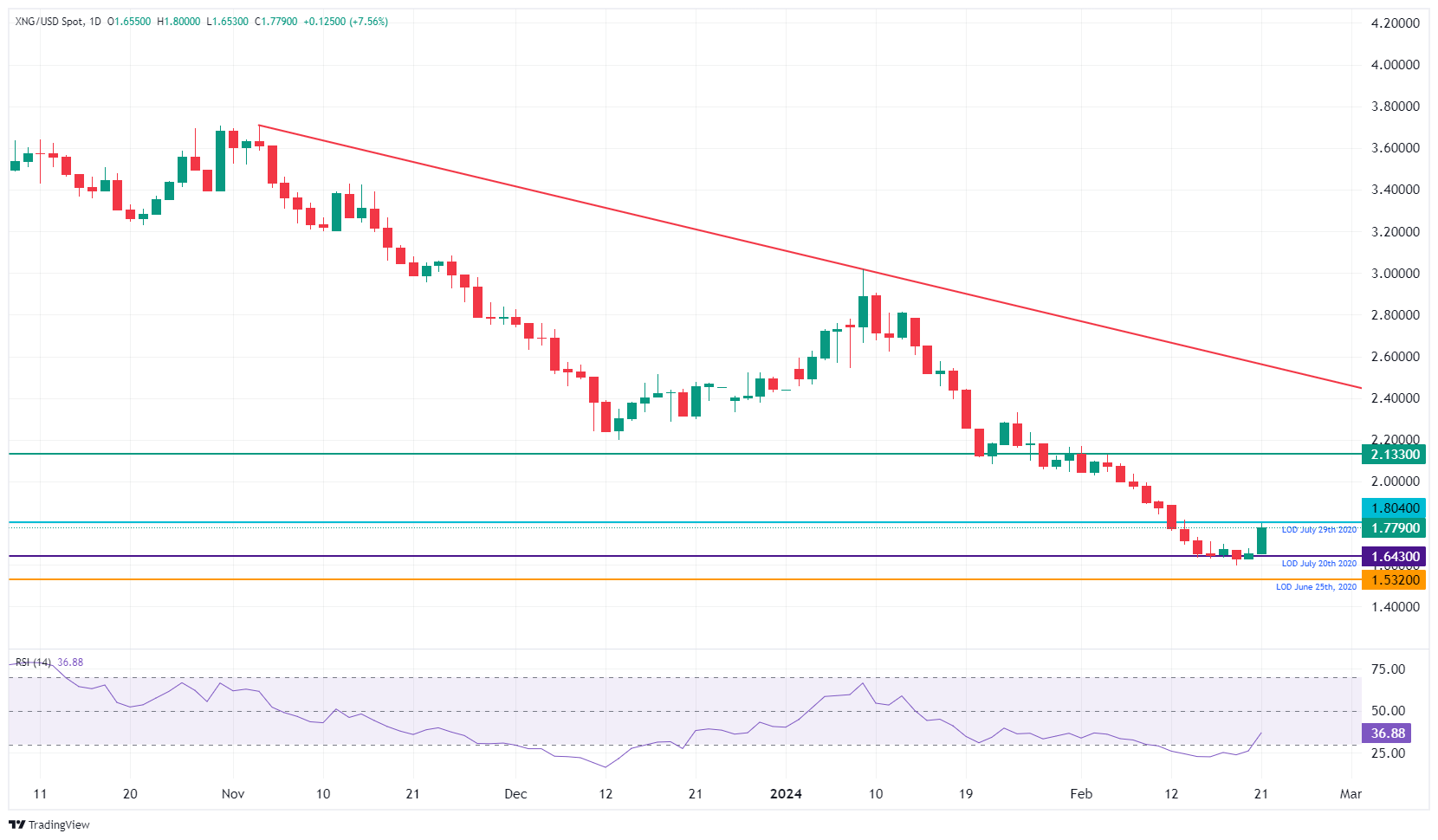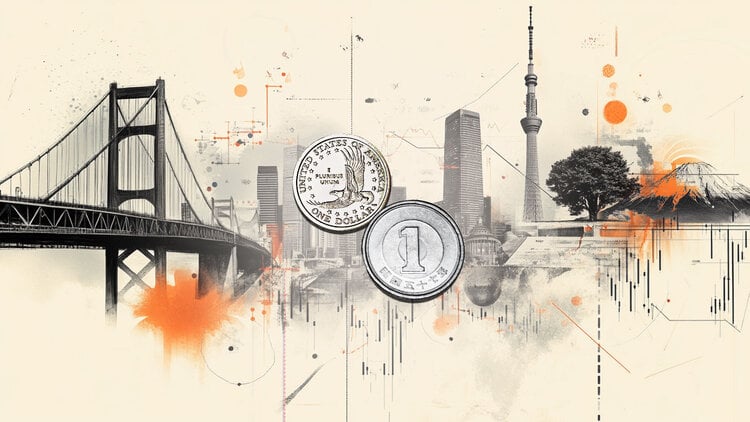- The price of Natural Gas rises more than 7% intraday during the European session.
- Investors are driving up the price of Gas while the supply side will soon see its flows reduced.
- The DXY Dollar Index once again exceeds 104.00 points after Tuesday's decline and ahead of the Fed minutes.
The price of Natural Gas (XNG/USD) is recovering $1.80 in a strong recovery driven mainly by the news. One of the major shale drillers, Chesapeake, plans to reduce its Natural Gas production as early as 2024. The recent collapse in Gas prices makes its Gas extraction operations almost unprofitable, and forces the company to cut its production, which means that global supply will become tighter.
The US dollar (USD) advances this Wednesday after the small decline on Tuesday. On Monday, a holiday in the United States, the DXY Dollar Index fell below 104.00 points. Before the US market opens on Wednesday, the DXY index is back above 104.00, pending the publication of the US Federal Reserve's minutes on the last meeting in which interest rates were decided. interest.
Natural Gas is trading at $1.78 per MMBtu at the time of writing these lines.
Engines in the Natural Gas market: The surplus is reduced
- The global supply of Gas has just been reduced with the reduction of Chesapeake production by 2024. Chesapeake will already reduce almost 20% of its total production by 2024.
- Liquefied Natural Gas (LNG) is flowing above average with more than 17% inflow above the normal 30-day average.
- The previous point shows that Europe is busy filling and replenishing its Gas stores with an eye on the next heating season.
- Several benchmark futures are soaring with this active buying that takes place in the Natural Gas futures markets.
Technical Analysis of Natural Gas: The catalyst that the markets were waiting for
The price of Natural Gas is finding reasons to rise and return to the $1.80 level. The move is because the supply side finally sees some disruption by 2024, meaning a (higher) revaluation is needed to account for this event. It is clear that if Gas prices want to rise further, any interruption in supply will be key to achieving this.
On the positive side, Natural Gas faces some fundamental technical levels to make a comeback. Once above $1.80, the next stop is $1.99, a level that, when broken, witnessed an accelerated decline. After that, the blue line at $2.13 will be in sight, with the triple bottom of 2023. Should Natural Gas demand suddenly rebound, $2.40 will likely come into play.
Important to keep an eye on $1.80, which was a fundamental level in July 2020 and acts as resistance with a firm rejection early this Wednesday. If recent news starts to fade, or more supply emerges in markets from other companies or countries to fill the gaps, then $1.64 and $1.53 (the 2020 low) are targets to watch.
XNG/USD daily chart
Frequently asked questions about Natural Gas
What fundamental factors determine the price of Natural Gas?
The dynamics of supply and demand is a key factor that influences Natural Gas prices, and is in turn influenced by global economic growth, industrial activity, population growth, production levels and inventories. Climate influences Natural Gas prices because more Gas is used during cold winters and hot summers for heating and cooling. Competition from other energy sources influences prices as consumers may opt for cheaper sources. Geopolitical events, such as the war in Ukraine, also play a role. Government policies related to extraction, transportation and environmental issues also influence prices.
What are the main macroeconomic publications that influence Natural Gas Prices?
The main economic publication that influences Natural Gas prices is the weekly inventory bulletin of the Energy Information Administration (EIA), a US government agency that produces data on the gas market in the United States. The EIA Gas bulletin usually comes out on Thursday at 14:30 GMT, the day after the EIA publishes its weekly Oil bulletin. The economic data of the large consumers of Natural Gas can influence supply and demand, among which China, Germany and Japan stand out. Natural gas is primarily priced and traded in US dollars, so economic releases affecting the US dollar are also factors.
How does the dollar influence Natural Gas prices?
The US dollar is the world's reserve currency and most commodities, including Natural Gas, are quoted and traded in international markets in US dollars. Therefore, the value of the Dollar influences the price of Natural Gas, since if the Dollar strengthens, fewer dollars are needed to buy the same volume of gas (the price falls), and vice versa if the dollar strengthens.
Source: Fx Street
I am Joshua Winder, a senior-level journalist and editor at World Stock Market. I specialize in covering news related to the stock market and economic trends. With more than 8 years of experience in this field, I have become an expert in financial reporting.








